
A rock garden is like a magic map of nature’s secrets. It mixes big stones, small plants, and shiny stones to make a special place. You can add tiny trees, flowers, and even rocks shaped like animals. This garden feels calm and fun for everyone. It’s easy to care for and looks beautiful all year.
Want a garden that shines? Try rock garden ideas that mix colors and shapes. Use small plants to fill gaps between rocks. Add a water feature for extra charm.
These gardens save water and help bees and butterflies. Learn how to make your yard feel like a wild adventure. Start today and watch your space glow.
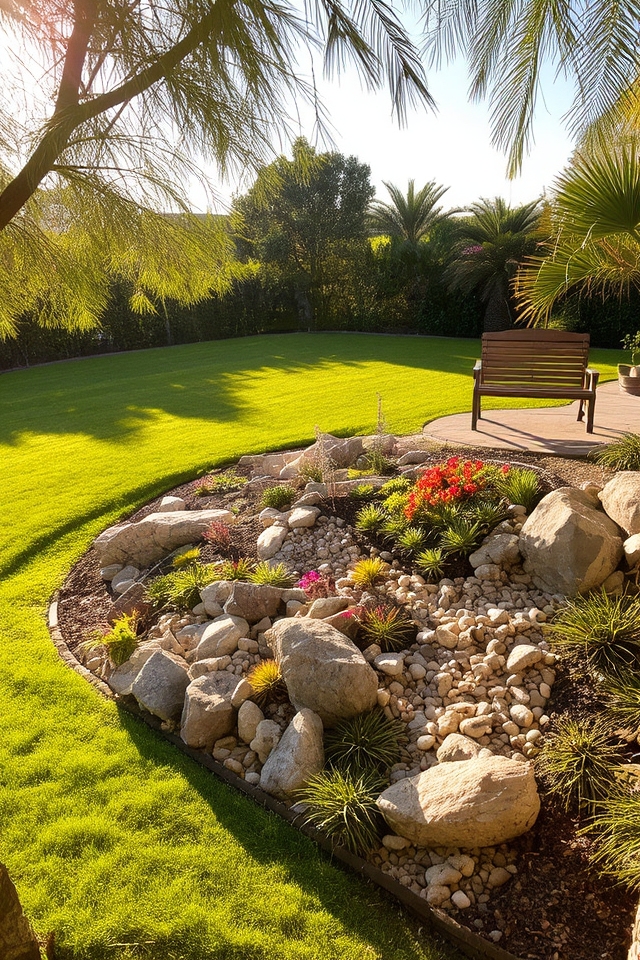
Choosing the right location for your rock garden is essential for its success and aesthetics. Look for a spot that receives at least six hours of sunlight daily, as most rock garden plants thrive in bright conditions. Consider areas with well-drained soil and natural slopes, which can enhance drainage and mimic the natural landscapes. Additionally, guarantee the location is visible from your home or outdoor spaces, allowing you to fully appreciate the beauty of your rock garden throughout the seasons.
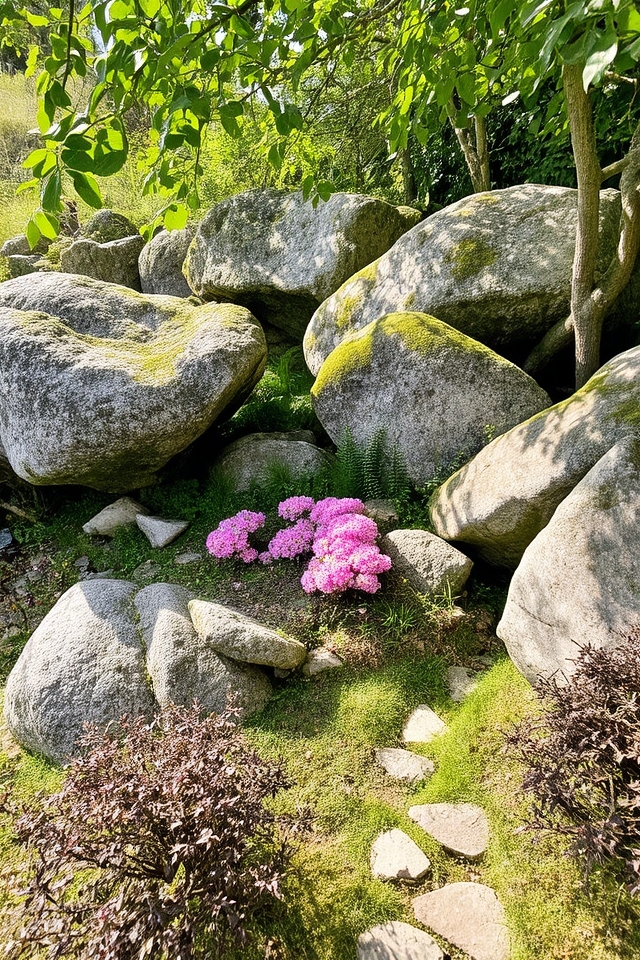
Incorporating boulders into your rock garden design adds a striking natural aesthetic while providing stability and visual interest. Choose a variety of sizes and shapes to create a layered effect, mimicking the look of a natural landscape. Positioning boulders among alpine plants and ground cover enhances the picturesque charm, creating inviting focal points. Additionally, strategically placed boulders can help with drainage and soil retention, making them functional as well as beautiful in your garden design.
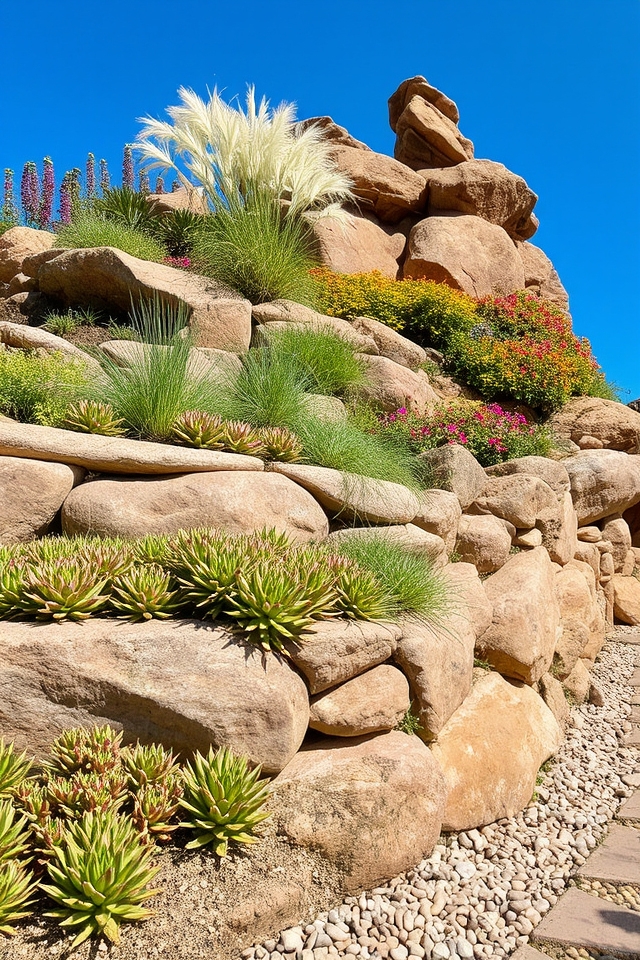
A tiered rock garden design adds depth and visual interest to your outdoor space. By creating multiple levels, you can showcase a variety of plants, rocks, and textures that complement each other. Start by choosing a slope or flat area to build your tiers, using stones or boulders to define each layer. Incorporate drought-resistant plants, ground covers, and ornamental grasses to fill spaces, ensuring a harmonious blend that thrives in your garden’s aesthetic.
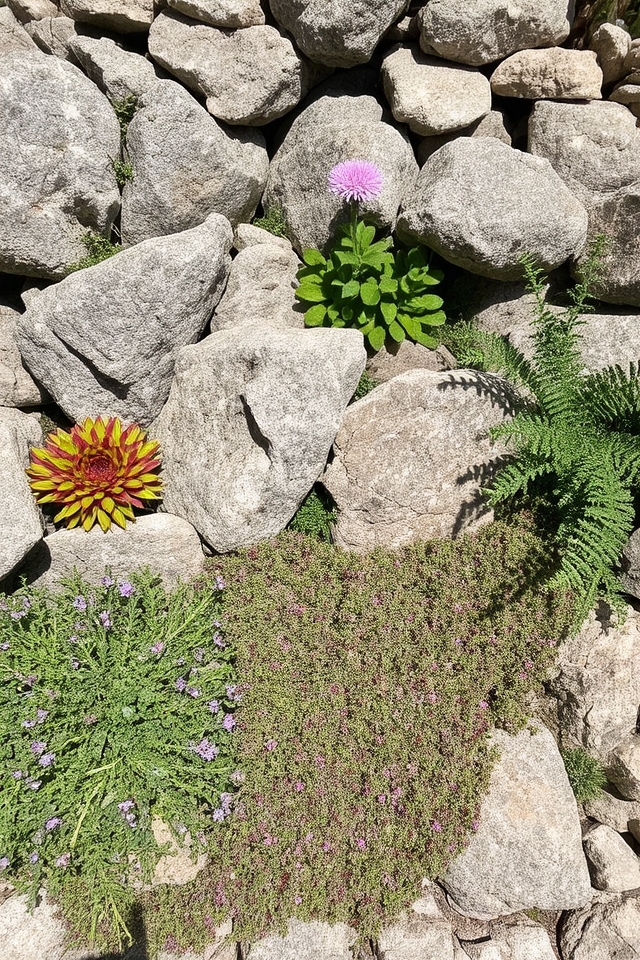
When selecting hardy plants for your rock garden, opt for species that thrive in well-drained soil and can withstand varying temperatures. Look for succulents, alpine plants, and perennials like sedums, thyme, and dianthus to add texture and color. Incorporate plants with different heights and forms to create visual interest, ensuring they are drought-tolerant and resilient to your local climate. This selection will help your rock garden flourish with minimal maintenance while enhancing its natural beauty.

Incorporating succulents into your rock garden can dramatically enhance its texture and visual appeal. These hardy plants come in a variety of shapes, sizes, and colors, allowing for diverse design possibilities. Their unique leaf structures provide a rich contrast to the rough surfaces of stones and gravel. Additionally, succulents are drought-tolerant, making them perfect for low-maintenance gardening. By strategically placing these plants among rocks, you create a dynamic landscape that thrives in both beauty and resilience.
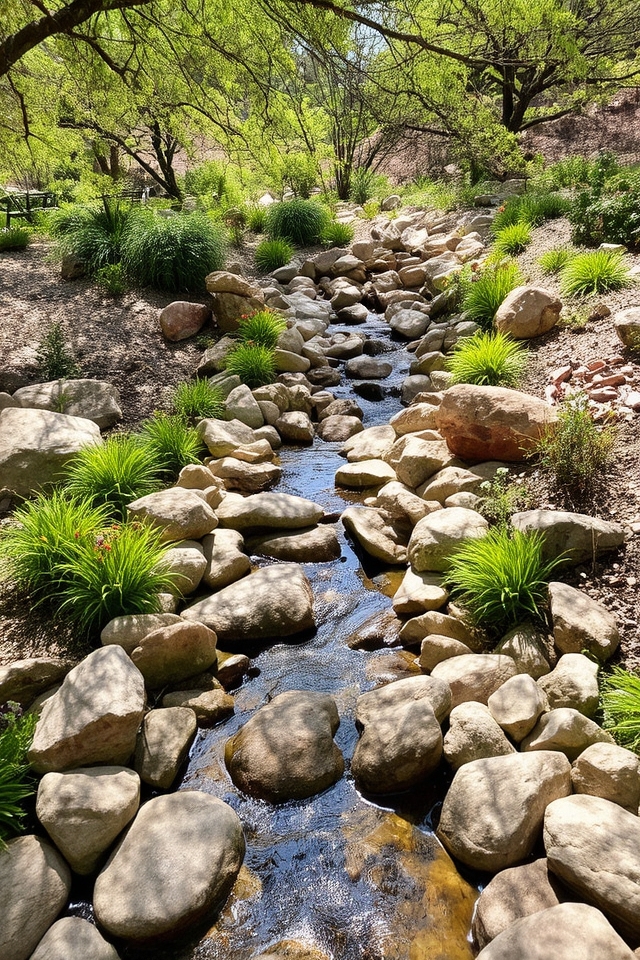
Designing a dry stream bed is an effective way to manage water runoff while adding a beautiful feature to your rock garden. By creating a natural-looking bed of gravel and stones, you can guide water away from problem areas and prevent erosion. Incorporate various sizes of rocks along with native plants to enhance aesthetics and promote biodiversity. This functional design not only helps with water management but also offers a serene, tranquil environment in your outdoor space.
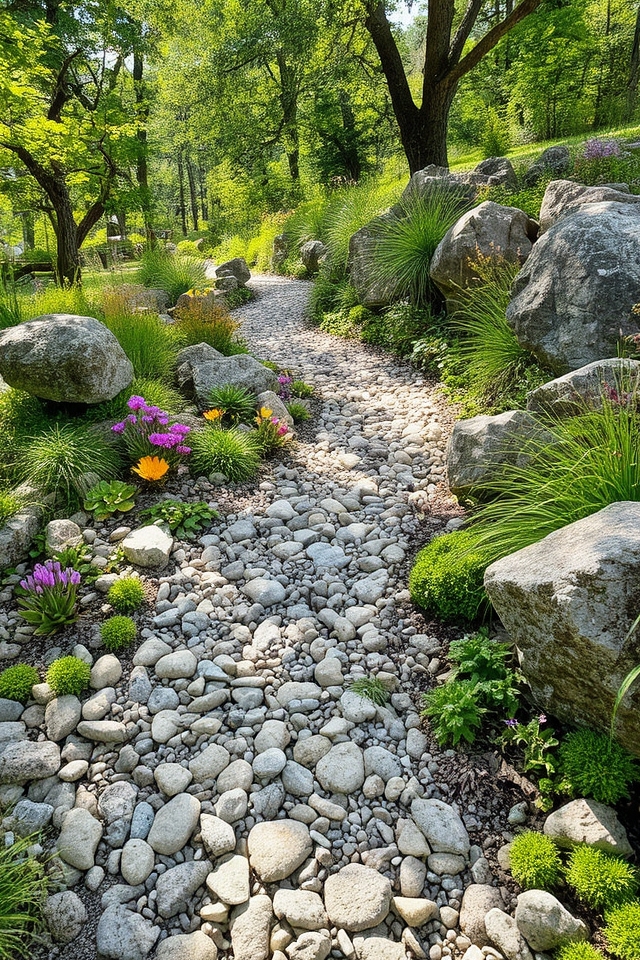
Incorporating pathways with gravel and stones is an excellent way to enhance the beauty and functionality of your rock garden. These pathways provide easy access to different areas of the garden while creating a rustic charm. Use a mix of small and larger stones to outline the path, interspersed with gravel for a visually appealing contrast. This not only helps with drainage but also adds texture, allowing plants and rocks to stand out, making your garden more inviting and well-structured.
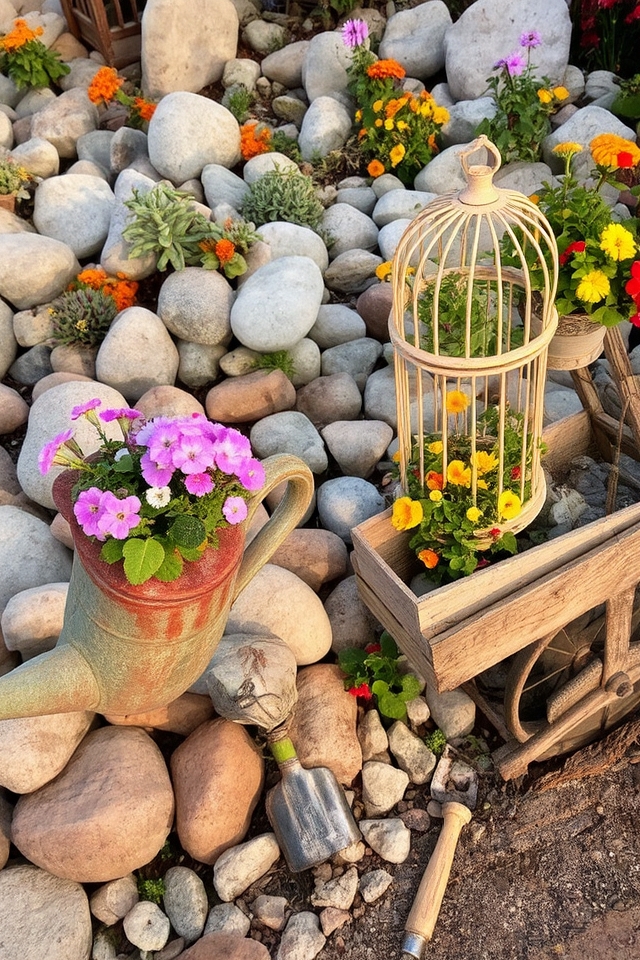
Incorporating vintage items into your rock garden can create unique focal points and add character to your outdoor space. Consider using old metal watering cans, rustic wooden crates, or worn birdcages as planters for succulents or small flowering plants. Vintage garden tools, like shovels or wheelbarrows, can also be creatively repurposed as decorative elements. These nostalgic touches not only enhance the visual appeal of your garden but also celebrate the charm of the past.
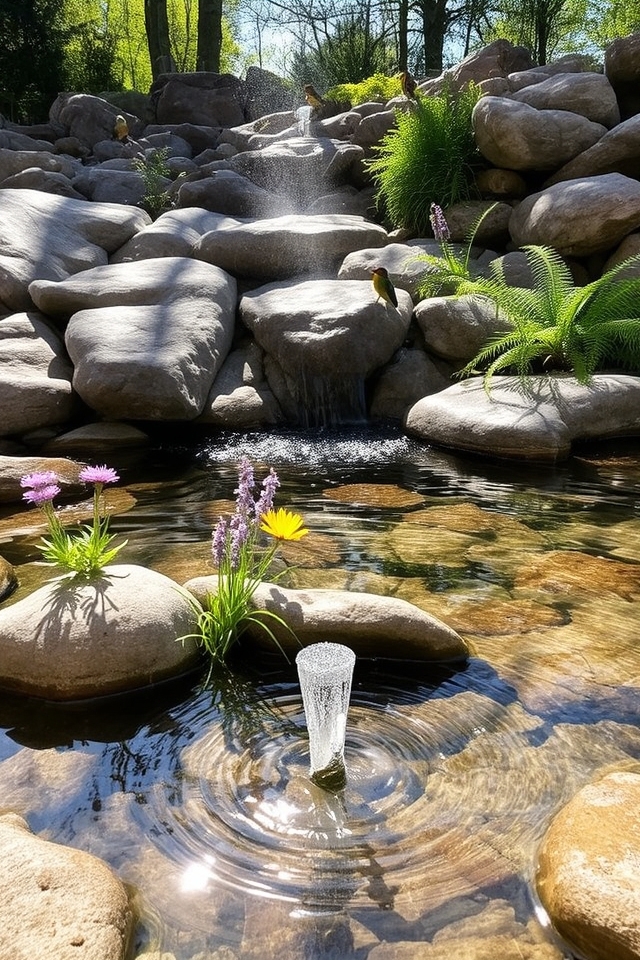
Incorporating water features into your rock garden can create a tranquil atmosphere and enhance the natural beauty of the landscape. Consider small ponds, bubbling fountains, or cascading waterfalls that harmonize with the stones and plants. The gentle sound of flowing water adds a serene dimension, attracting birds and wildlife while providing a soothing backdrop. Strategically placing these features amidst the rocks encourages relaxation and offers a rejuvenating contrast to the rugged textures of your garden.
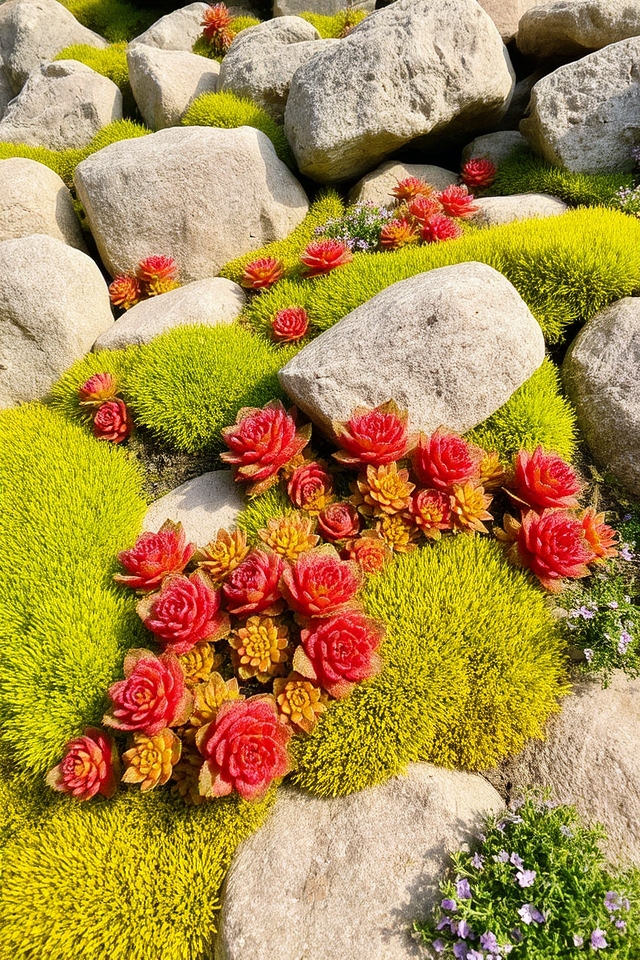
Planting in between rocks can transform your outdoor space into a lush, natural haven. Select low-growing plants, such as sedums, mosses, or creeping thyme, to nestle among the stones. These resilient species thrive in rocky conditions and add vibrant colors and textures to your garden. Incorporating various heights and leaf shapes enhances visual interest while creating a harmonious blend with the rocks. This technique not only softens hardscapes but also promotes biodiversity, making your garden a thriving ecosystem.
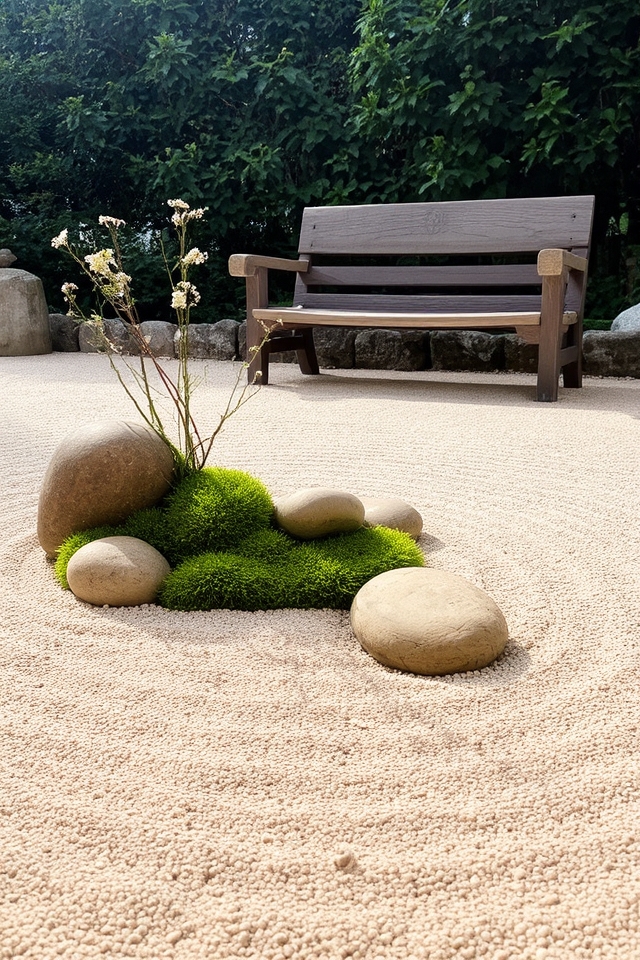
Creating a Zen rock garden for meditation involves using carefully placed stones, gravel, and minimalist plant life to cultivate a serene space. Start by selecting smooth stones for focal points and raking fine gravel into patterns that represent water ripples. Incorporate elements like moss or small shrubs for a touch of greenery without overwhelming the simplicity. This tranquil setting promotes mindfulness, allowing for deep reflection and peaceful meditation amidst nature’s beauty.

Color coordination in a rock garden can create a harmonious and visually stunning landscape. By selecting flowers that complement the hues of the rocks, you can enhance the overall aesthetic. For instance, pairing light-colored rocks with vibrant blooms like daisies or poppies can create a striking contrast. Conversely, dark stones can be beautifully accented with pastel flowers or those in shades of white and yellow. Thoughtful coordination encourages a natural flow and draws attention to both the flora and the stones, resulting in an enthralling garden design.
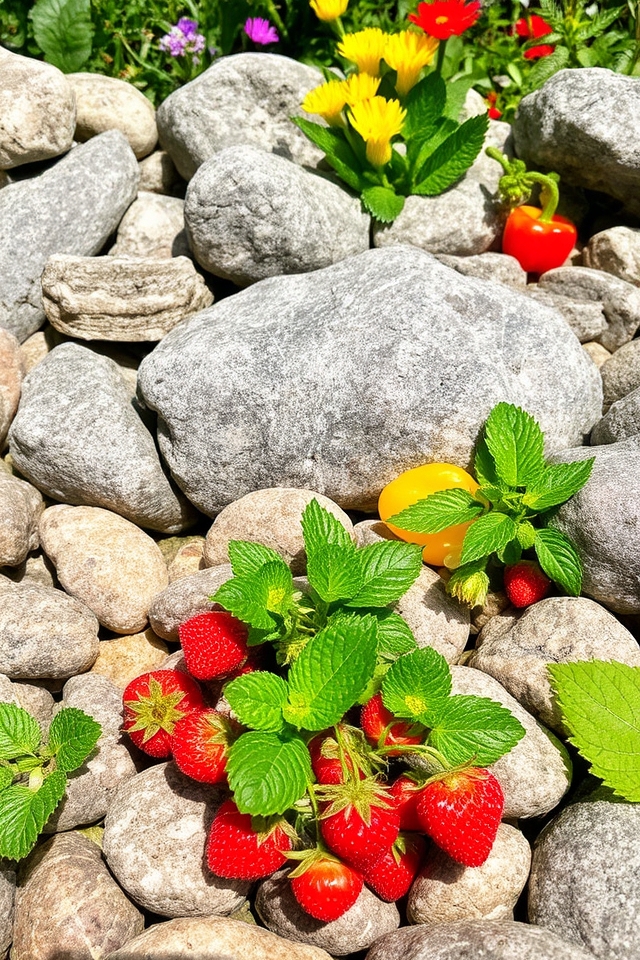
Incorporating edible plants into your rock garden adds both beauty and functionality. Choose resilient varieties like alpine strawberries, savory herbs, or miniature peppers that thrive in rocky, well-drained soil. Arrange these plants among your stones for an appealing blend of texture and color. Not only will your garden provide aesthetic charm, but it will also yield delicious produce, making it a delightful and practical addition to your outdoor space.
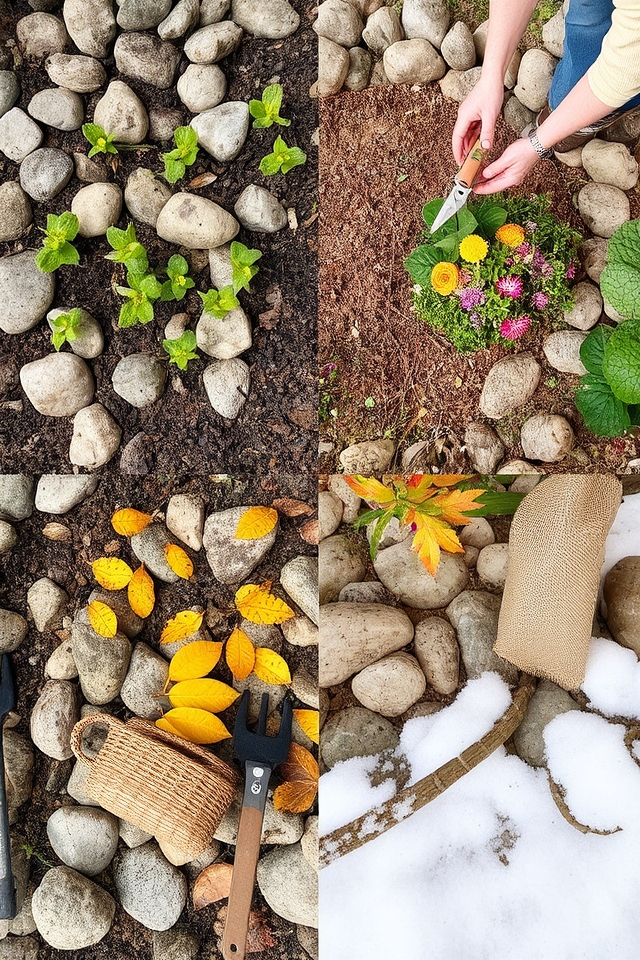
Seasonal maintenance is essential for keeping rock gardens vibrant and healthy. In spring, remove winter debris and check for any unwanted weeds. Regularly water new plants and refresh mulch to retain moisture. During summer, prune overgrown plants and guarantee proper drainage to prevent root rot. In fall, clean up fallen leaves and prepare the garden for winter by covering sensitive plants with burlap or mulch. These steps will help guarantee a thriving rock garden all year round.
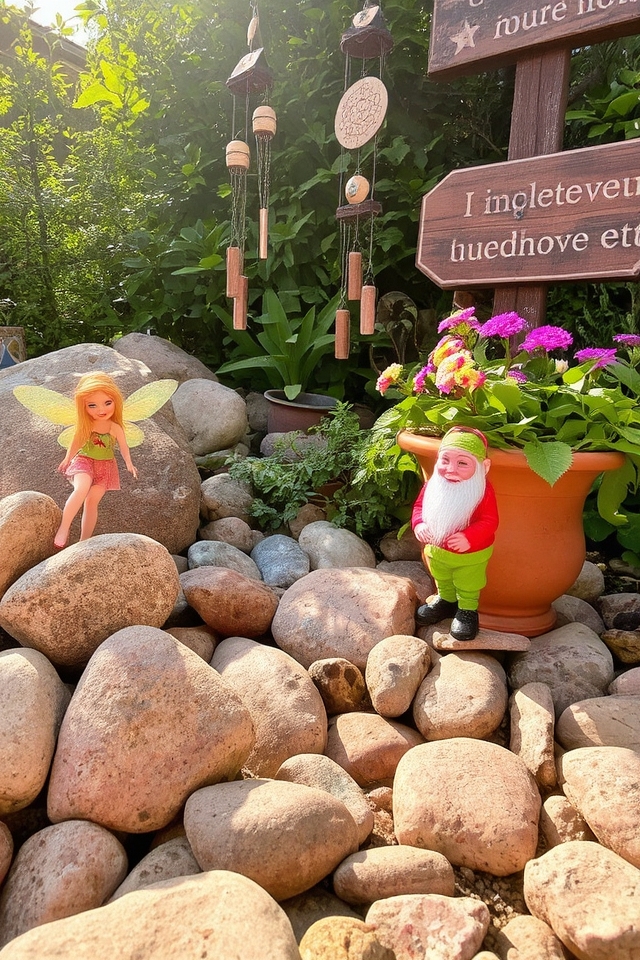
Personalizing your rock garden with art and decor is a fantastic way to enhance its unique character. Consider incorporating whimsical sculptures, vibrant garden gnomes, or handcrafted wooden signs to add charm and personality. Wind chimes and decorative stones can create soothing sounds and visual interest. Additionally, colorful planters or mosaic tiles interspersed among the rocks can bring a pop of color. Personal touches not only reflect your style but also make your rock garden a true sanctuary.
As you begin your rock garden journey, remember that nature’s beauty mirrors art—just like Monet’s gardens, your space can be a canvas of color and texture. By blending plants, stones, and personal touches, you’ll craft a sanctuary that reflects your unique vision. Embrace the journey of creation; your rock garden will not only thrive but also resonate with tranquility and inspiration, much like a favorite memory cherished in the heart of a thousand landscapes.

Don't let aphids, slugs, and caterpillars ruin another plant. Take back control with simple, natural methods that actually work.